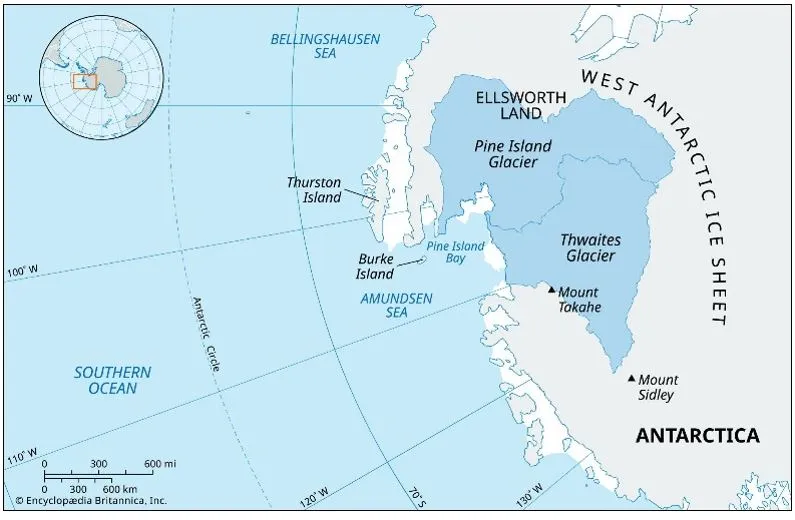

14th November 2024 (10 Topics)
Context
Scientists have proposed a bold and innovative solution to halt the rapid melting of Antarctica's Thwaites Glacier, also known as the "Doomsday Glacier," which has the potential to trigger catastrophic sea-level rise.
Key Findings and Proposals
- The Thwaites Glacier, located in West Antarctica, is melting rapidly due to the intrusion of warm ocean waters beneath it, causing significant ice loss.
- The glacier has been losing ice at an accelerated rate due to climate change, threatening to raise global sea levels by up to 10 feet, endangering coastal cities like New York, Miami, Charleston, and Atlantic City.
- Geoengineering Proposal: Researchers have suggested a radical geoengineering approach to slow or stop the glacier’s melting.
- One of the proposed methods involves pumping seawater onto the glacier’s surface, where it would freeze due to cold air temperatures, thickening the glacier over time.
- Another idea involves installing a giant underwater curtain to prevent warm ocean waters from reaching the base of the glacier, helping to cool the bedrock and reduce melting.
- Challenges and Costs: While the idea has potential, it comes with several risks and costs:
- The seawater’s salinity could harm the glacier’s structural integrity.
- Large-scale deployment would require immense amounts of energy and cost around USD 6 billion per year.
- Researchers acknowledge that such interventions would not be a permanent solution and would require continuous, large-scale efforts.
Thwaites Glacier
|
More Articles



